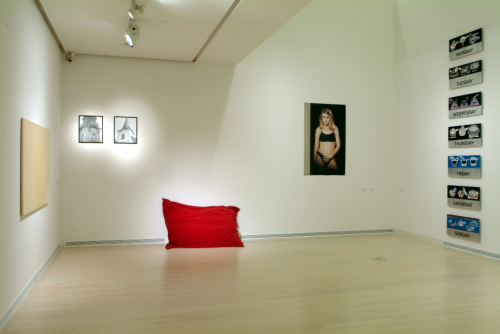The essence of Pál Szacsva y’s “found images” and “reprojections” is the confusion of senses, the overlaying of different layers of reality, the analysis of the relation between medium and reality. He first projects the selected photograph onto a surface that is difficult to identify – mostly common items found in his apartment – and then takes a photo of the two combined. The different scale and quality of the two photographs, the two realities fuse into perplexing union in the final print. The artist often uses photographs depicting cars and other vehicles, and prefers contrasting their shiny and spotless surface with the structure of an unmade bed or clothes lying around. The background wrinkles and distorts the projected surface, and the lustrous world of auto salons is mixed with the homely sloppiness of private sphere. The car is one of the status symbols of the period of democratic transition; throughout the past decades, most car owners have replaced their Skodas or Ladas with Western cars, even at the cost of becoming indebted for life. Car industry is one of the main economic sectors in Hungary, with a number of foreign car factories and their parts distributors employing more than a hundred thousand people. K.Sz.

